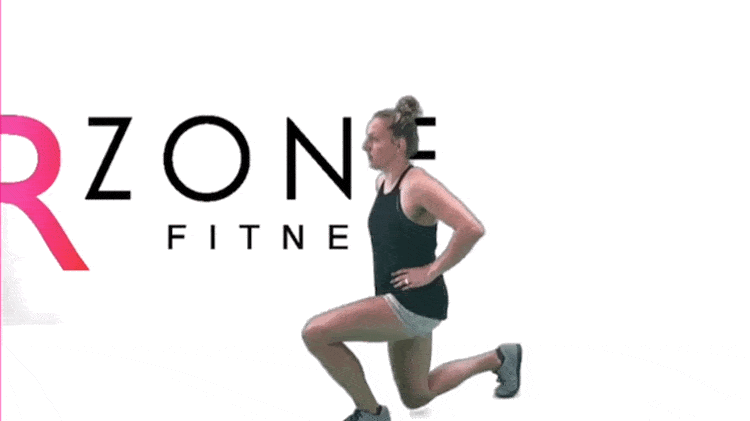An alternating forward lunge is a highly effective exercise that primarily targets the lower body muscles. It involves stepping forward into a lunge position and then returning to the starting stance before alternating legs. Here’s how to perform it properly and how you can progress it with added weights, along with an explanation of the muscles it benefits.
How to Perform an Alternating Forward Lunge:
Starting Position:
Stand tall with your feet hip-width apart.
Keep your chest lifted, shoulders back, and core engaged.
Place your hands on your hips or by your sides, or hold weights (such as dumbbells) by your sides.
Step Forward:
Take a step forward with your right leg, landing in a lunge position.
Lower your body by bending both knees to about 90 degrees. Your back knee should hover just above the ground, and your front knee should stay aligned with your ankle (not going past the toes).
Ensure that the back knee is directly beneath your hips and your torso remains upright.
Push Back to Starting Position:
Push through the heel of your front foot to return to the starting position, bringing your right leg back to meet your left leg.
Alternate Legs:
Now, step forward with your left leg and repeat the movement.
Breathing:
Inhale as you lower your body into the lunge and exhale as you push back to the starting position.
Muscles Worked by the Alternating Forward Lunge:
The alternating forward lunge is a compound movement, meaning it engages multiple muscle groups, primarily in the lower body. The major muscles targeted include:
Quadriceps (front of the thighs) – The front leg’s thigh muscles are engaged as you push back to the starting position.
Glutes (buttocks) – The glutes help propel you back up to standing, especially when using weights.
Hamstrings (back of the thighs) – These muscles assist in bending the knee and stabilizing the movement.
Calves – The calves help stabilize the foot during the forward step and push-off.
Hip Flexors – These muscles help control the step forward and assist in stabilizing the hip.
Core – Your core engages to maintain balance and stability during the movement.
How We Use the Alternating Forward Lunge at Rzone Fitness:
At Rzone Fitness, we emphasize a balanced, functional approach to fitness, and the alternating forward lunge is an excellent exercise for improving strength, mobility, and coordination. It can be used for:
Warm-ups: A great way to activate the lower body muscles before more intense workouts.
Strength Training: To build leg strength and stability, particularly for exercises like squats and deadlifts.
Endurance Training: It can also be included in HIIT (High-Intensity Interval Training) or circuit routines to enhance cardiovascular fitness.
Progressing with Added Weights:
As members build strength and proficiency in the alternating forward lunge, we progress the exercise by adding weights, which increases the intensity and helps to further develop muscle strength. Here are ways to progress:
Start with Bodyweight: Initially, members should practice the movement using only their bodyweight. This allows them to focus on form and establish good movement patterns.
Add Dumbbells or Kettlebells:
Hold weights in each hand: Members can hold a dumbbell in each hand by their sides. The added load increases the intensity on the legs, glutes, and core.
Overhead Dumbbell or Kettlebell Hold: For a greater challenge to the core, holding weights overhead while lunging engages more core stabilizing muscles.
Goblet Lunge: Hold a kettlebell or dumbbell with both hands at chest level, and lunge forward. This version targets the upper body and core more, adding a stability component.
Barbell Lunges: For advanced progressions, a barbell across the back or front squat position can be added to significantly increase resistance.
Increase Reps and Sets: As strength and endurance improve, increasing the number of repetitions and sets can help build more muscle and endurance. For example, increase to 3–4 sets of 12–15 reps on each leg.
Tempo Changes: Slowing down the descent or pause at the bottom of the lunge can increase time under tension, making the muscles work harder. For example, count 3-4 seconds on the descent phase and then explode back to standing.
Weighted Step Ups (as a variation): This can be used as a progression to further develop the lunging motion while adding challenge with weight.
By gradually increasing the weight, intensity, and complexity of the movement, members at Rzone Fitness can continue to progress and build strength, stability, and coordination in a safe and effective way.
- Key Benefits for Members:
Improves balance and coordination through dynamic movement patterns.
Targets multiple muscle groups at once, making it an efficient full-body exercise.
Helps prevent injuries by strengthening muscles that stabilize the knees and hips.
Enhances functional movement patterns useful in daily life, improving walking, running, and other athletic activities.
Incorporating alternating forward lunges with progressive loading at Rzone Fitness helps ensure continuous strength gains and muscle development.


You must be logged in to post a comment.